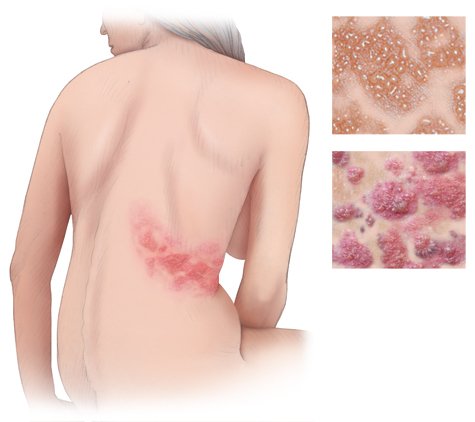Chen N, Li Q, Yang J et al. Antiviral treatment for preventing postherpetic neuralgia. Cochrane Database Syst Rev 2014; (2): CD006866.
Deutsche Dermatologische Gesellschaft (DDG). Diagnostik und Therapie des Zoster und der Postzosterneuralgie (S2k-Leitlinie). AWMF-Registernr.: 013-023. 2019.
Gagliardi AM, Andriolo BN, Torloni MR et al. Vaccines for preventing herpes zoster in older adults. Cochrane Database Syst Rev 2019; 2019(11).
Han Y, Zhang J, Chen N et al. Corticosteroids for preventing postherpetic neuralgia. Cochrane Database Syst Rev 2013; (3): CD005582.
McDonald EM, de Kock J, Ram FS. Antivirals for management of herpes zoster including ophthalmicus: a systematic review of high-quality randomized controlled trials. Antivir Ther 2012; 17(2): 255-264.
Robert Koch-Institut (RKI). Empfehlungen der Ständigen Impfkommission (STIKO) beim Robert Koch-Institut 2022 (Epidemiologisches Bulletin 04/2022). 2022.
Robert Koch-Institut (RKI). Gürtelrose (Herpes zoster): Antworten auf häufig gestellte Fragen zu Erkrankung und Impfung. 2022.
Robert Koch-Institut (RKI). RKI-Ratgeber: Windpocken (Varizellen), Gürtelrose (Herpes zoster). 2019.
Ständige Impfkommission (STIKO). Wissenschaftliche Begründung für die Entscheidung, die Herpeszoster-Lebendimpfung nicht als Standardimpfung zu empfehlen. 2017.
Ständige Impfkommission (STIKO). Wissenschaftliche Begründung zur Empfehlung einer Impfung mit dem Herpes zoster-subunit-Totimpfstoff. 2018.
IQWiG health information is written with the aim of helping people understand the advantages and disadvantages of the main treatment options and health care services.
Because IQWiG is a German institute, some of the information provided here is specific to the German health care system. The suitability of any of the described options in an individual case can be determined by talking to a doctor. informedhealth.org can provide support for talks with doctors and other medical professionals, but cannot replace them. We do not offer individual consultations.
Our information is based on the results of good-quality studies. It is written by a team of health care professionals, scientists and editors, and reviewed by external experts. You can find a detailed description of how our health information is produced and updated in our methods.



